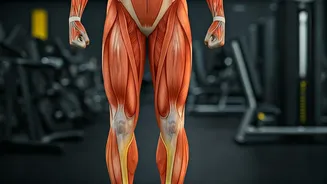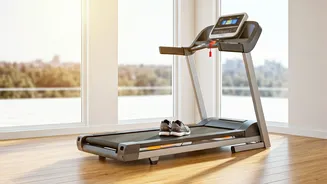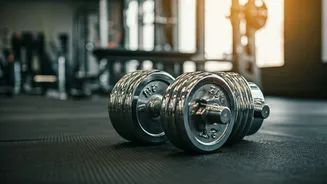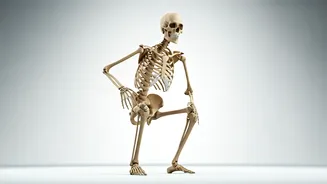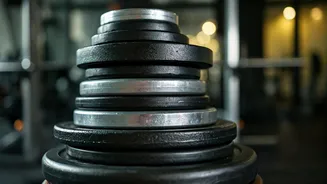Importance of Lower Body
The lower body, encompassing the legs, hips, and core, serves as the foundation for nearly all movements. Strong lower body muscles are crucial for activities
such as walking, running, jumping, and maintaining balance. Furthermore, a robust lower body is indispensable for everyday tasks, improving quality of life and reducing the risk of injuries. Strengthening these muscle groups not only improves athletic performance but also helps to prevent falls, especially as individuals age. It also supports better posture, contributing to overall physical health. Incorporating lower body exercises into your routine can lead to greater functional capacity, enabling you to move more freely and confidently in your daily life. Regular workouts can alleviate joint pain, and boost energy levels. A well-conditioned lower body forms the basis of a healthy, active lifestyle.
Warm-up Essentials
Before engaging in any lower body workout, a thorough warm-up is essential to prepare the muscles for the physical demands ahead. Begin with dynamic stretches, like leg swings and high knees, to increase blood flow and flexibility. These movements should be performed for about 5-10 minutes, focusing on major muscle groups. Foam rolling can also be incorporated to release muscle tension and improve mobility. Gentle cardio, such as jogging in place or jumping jacks, further elevates heart rate and prepares the cardiovascular system. Proper warm-up is crucial for enhancing workout effectiveness and avoiding injuries. Warming up can also enhance your range of motion, letting you to perform exercises more effectively. It helps improve mind-muscle connection, ensuring you are focused and ready for the workout.
Squat Variations
Squats are a foundational exercise for lower body strength, targeting the quadriceps, hamstrings, and glutes. There are several variations of squats, each offering different benefits. The basic squat involves standing with feet shoulder-width apart, lowering the hips as if sitting in a chair, and keeping the back straight. For increased challenge, consider adding weights, performing front squats or overhead squats. Sumo squats, with a wider stance, engage the inner thighs. Box squats, performed by squatting down to a box, can help improve technique. Bodyweight squats are a good starting point for beginners, improving form before adding weights. Consistency in squatting, combined with proper form, promotes significant lower body strength and muscular development. Performing different squat variations adds variety to your workouts and helps to prevent plateaus.
Lunges and Step-Ups
Lunges are another highly effective exercise that works the quadriceps, hamstrings, and glutes. They can be performed in various ways, like forward lunges, reverse lunges, and walking lunges, which involve stepping forward into a lunge position. Step-ups, where you step onto an elevated surface, offer a great way to target individual leg muscles. Lunges improve balance and coordination, while step-ups can be tailored by adjusting the height of the step. Lunges and step-ups can be easily adjusted to match fitness levels, making them accessible for beginners and challenging for advanced athletes. Incorporate these exercises to achieve balanced muscular development and functional strength. Maintaining proper form, with the front knee aligned over the ankle, is crucial to prevent knee injuries. Consistent practice will lead to noticeable improvements in strength, stability, and overall athletic performance.
Hamstring Exercises
Hamstring exercises are vital for a well-rounded lower body workout, as they counter the quadriceps and support overall leg stability. Effective hamstring exercises include Romanian deadlifts (RDLs), hamstring curls, and glute-ham raises. RDLs involve hinging at the hips while keeping the back straight, and slowly lowering a weight towards the ground. Hamstring curls can be done with machines or resistance bands. Glute-ham raises are a more advanced exercise that intensely works both hamstrings and glutes. Strengthening hamstrings can help prevent injuries. The hamstrings work synergistically with the glutes and core to stabilize the body during various movements. Focusing on hamstring development will also lead to improved running and jumping performance. Include these exercises to see comprehensive results.
Mobility and Flexibility
Enhancing mobility and flexibility is as important as building strength. Incorporate dynamic stretching before workouts and static stretching afterward. Dynamic stretches, like leg swings and torso twists, prepare the muscles for movement. Static stretches, which involve holding a position for 20-30 seconds, improve flexibility and reduce muscle soreness. Exercises such as hip flexor stretches, hamstring stretches, and calf stretches are beneficial. Regular foam rolling can also help release muscle knots and improve mobility. Consistent attention to mobility and flexibility leads to greater range of motion, injury prevention, and improved overall movement efficiency. Yoga and Pilates are excellent choices for enhancing flexibility and balance, complementing strength training exercises. Prioritizing flexibility is key to long-term health and athletic performance.
Core Integration
A strong core is critical for stabilizing the body during lower body exercises and preventing injuries. Include exercises that engage the core muscles. Examples are planks, Russian twists, and leg raises. The core works synergistically with the lower body to provide stability and power. A strong core improves posture and enhances balance, allowing for more effective lower body workouts. Consistent core work supports better form during squats, lunges, and other exercises, minimizing the risk of strain. Performing core exercises regularly is critical for overall fitness. Developing a strong core contributes to athletic performance and overall functional strength. This is an important step in attaining the best results.
Workout Frequency
Determining an appropriate workout frequency for lower body strength and mobility depends on individual fitness levels and goals. Beginners should begin with 2-3 sessions per week, allowing adequate rest and recovery. Intermediate and advanced individuals can train 3-4 times per week, possibly incorporating split routines. It’s essential to listen to your body and adjust the frequency based on recovery needs. Prioritizing rest days is as important as training days. Rest allows muscles to repair and rebuild, reducing the risk of injury. Overtraining can hinder progress and lead to exhaustion. Incorporate active recovery on rest days, such as light walks or stretching, to promote blood flow. Proper scheduling, along with effective nutrition and adequate sleep, contributes to consistent progress.
Nutrition and Recovery
Nutrition and recovery are essential for achieving optimal results in lower body training. Prioritize a balanced diet, including adequate protein to support muscle repair and growth, carbohydrates for energy, and healthy fats. Hydration is also crucial for performance and recovery; drink plenty of water throughout the day. Adequate sleep, around 7-9 hours per night, is critical for muscle recovery. Consider using supplements, like creatine or protein powder, to support muscle growth. Eating a well-timed meal that includes protein and carbohydrates soon after a workout can enhance recovery. The right nutrition and recovery plan is as important as exercise. Prioritize whole foods, proper hydration, and sufficient rest for the best results.
